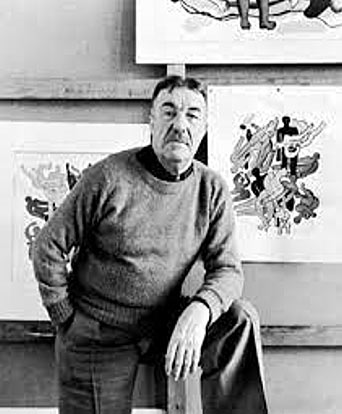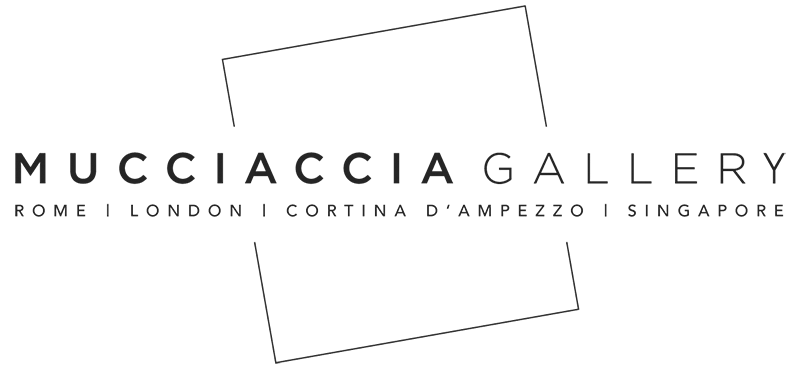Fernand Léger
Jules Fernand Henri Léger was born on 4 February 1881 in Argentan, Normandy.
From 1897 to 1899 he was a pupil of an architect in Caen and in 1900 he moved to Paris, where he earned a living working as an architectural draughtsman.
Although he was denied admission to the Ecole des Beaux-Arts, he attended its classes anyway.
He also studied at the Académie Julian and painted according to forms of clear Impressionist influence. Léger’s first known works of this kind date from 1905.
After Paul Cézanne’s retrospective at the Salon d’Automne in 1907, influenced by Cézanne’s reflections on the cylinder, the cone and the sphere, the painter became interested in forms and volumes, approaching the formal research of Picasso and Braque, from which Cubism emerged at that time.
In 1910, Fernand Léger exhibited with Braque and Picasso at the D-H Kahnweiler Gallery and held his first solo exhibition here in 1912.
After the interlude of the war, which brought him closer to the mechanical world on the one hand and to the human and proletarian world on the other, Fernand Léger immersed himself in assiduous pictorial research in order to develop these themes.
Fernand Léger produced works with a distinctly social character and content, revolving around the world of machines and mechanisms, expressed in a monumental manner.
In the early 1920s Fernand Léger collaborated with the writer Blaise Cendrars on several films and designed sets and costumes for Rolf de Maré’s Ballet suédois.
In 1923-24 he worked on his first film without a plot, Ballet mécanique.
In 1924, Fernand Léger opened an atelier with Amédèe Ozenfant and in 1925, at the Exposition Internationale des Arts Décoratifs, he presented his first mural paintings in the Pavillon de l’Espritleger.
In 1931 he visited the United States for the first time, where he returned a few years later to exhibit at the Museum of Modern Art in New York and where the Art Institute of Chicago put some of his works on show.
Léger lived permanently in the United States during the war, but returned to France in 1945.
During the last ten years of his life, Léger’s many projects ranged from book illustrations, monumental figure paintings and wall paintings to stained glass windows, mosaics, polychrome ceramic sculptures and designs for stage sets and theatre costumes. In 1953 he designed the magnificent stained-glass windows for the University of Caracas and a mosaic for the auditorium of Oscar Niemeyer’s São Paulo Opera House, also devoting himself to the cycles of large canvases La Grande Parade and The Builders.
In 1955 Fernand Léger exhibited at the Lion Museum and won the Grand Prix of the São Paulo Biennial, but in August of the same year he died at his home in Gif-sur-Yvette, France.
In 1959, the Musée National Fernand Lèger was founded in Biot.


